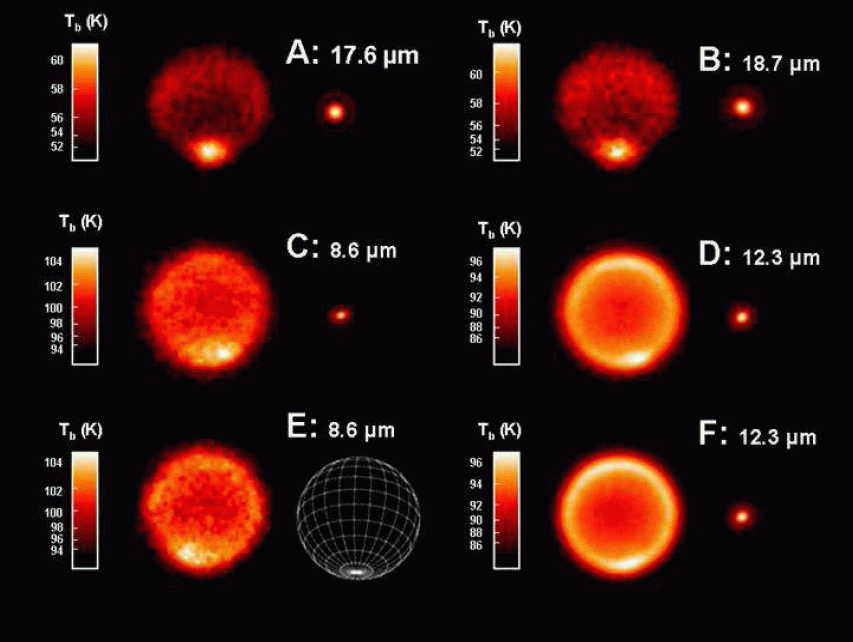
This is the first publication of spatially resolved thermal images of Neptune at wavelengths sensitive to temperatures near its tropopause (temperature minimum) which are substantially influenced by seasonally varying solar input. The images show the south pole of Neptune at this level (near 0.1 bars / 100 mbar pressure) is extremely warm, generally consistent with the fact that it is late southern summer and this region has been in sunlight for close to 40 years.
In fact the temperatures are so warm that methane (CH4) gas, which should be frozen ("cold trapped") out of the stratosphere above this level, can leak out through this region of warm temperatures. This solves a long-standing problem of identifying the source of Neptune’s high stratospheric methane abundances. It also means that methane could be migrating northward from the south polar leak if Neptune’s stratospheric circulation is vigorous enough. If the warm temperatures at the south pole are, indeed, seasonally driven, it means that methane will be leaking out of a warm *north* pole in about 80 years, during Neptune’s northern summer. This sort of migration has some similarities to the seasonally driven hemispherical migration of CO2 on Mars, although methane is not the primary constituent of Neptune’s atmosphere (those are molecular hydrogen and helium).

Another unexpected result was the detection of a discrete warm region near 65-70 degrees S latitude in emission from methane and ethane gas at higher levels in the stratosphere. This region was definitely not at the pole itself, unlike the temperature peak deeper down. Observations in 2005 at Keck and recently in 2007 at Gemini/North showed no such region.
